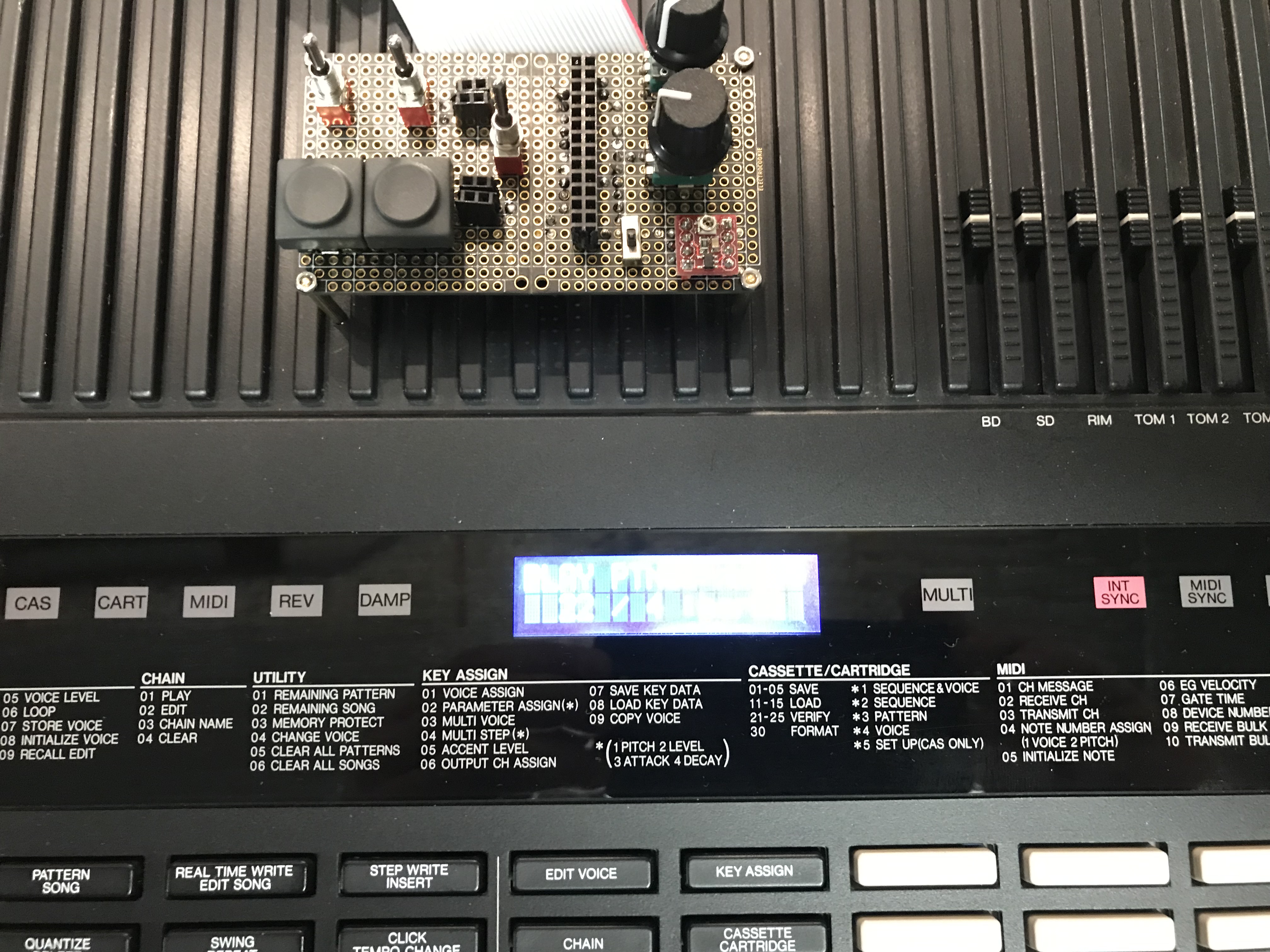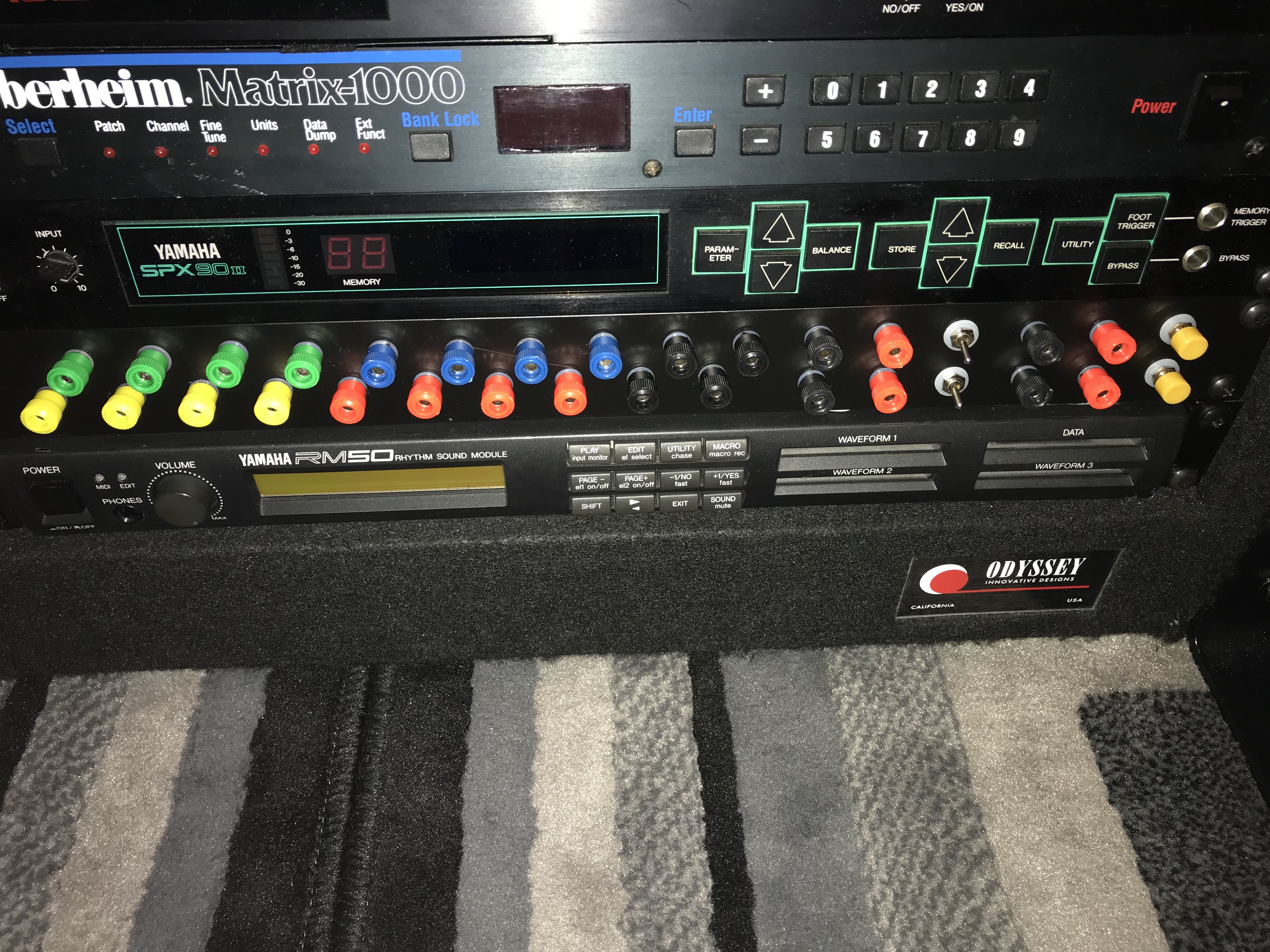| Hardware Hacking - Circuit Bending - Firmware Mods |
|
| Hardware Hacking - Circuit Bending - Firmware Mods |
|
|
The MV 8000 and 8800 series groovebox/production studios are amazing pieces of hardware. They pack a ton of DAW functionality into a pretty integrated hardware box. I love mine but there were small things I wanted to change or add so I took on the (way more challenging than I expected) project of modifying the firmware. At this point I am able to make changes to the 8800's main firmware and have made a few improvements/tweaks so far, including:
I have much more planned too! There was a lot to do to get to the point of being able to make changes and most of it is documented here at the mv-nation forum archive. What I enjoy most about this project is it involves reversing both the hardware at a very low level (things like chip selects, registers, etc) and all of the software with many challenges along the way. I also learned a new processor instruction set and architecture (SuperH, thanks to Ghidra and a ton of autoit) and many other things as a result of all the work. Very rewarding, plus my old sampler is getting updated! |
|
|
|
|
Picked this up as "non-working" on eBay for $25. It had some issues which were easily fixed (screen was busted, battery dead). Did most of the recommended updates in the service manual, new screen, retrobrited the buttons and circuit bent it including a few types of bends I haven't seen on other builds. |
|
The OS and both sound roms are now external to the unit and can be swapped out for changing from the stock sounds. This is a pretty common mod. The circuit bends on my unit are the standard ROM/RAM patch points for which I used tiny 2.54mm sockets rather than banana or 3.5mm jacks. Any of these can be routed to momentary or toggle switches in addition to be being controlled via the 4 3.5mm trigger inputs. These 4 inputs connect to a 4066 switch chip. When the chip gets a 5v signal, it "shorts" the 2 patched inputs, so you can externally control bends with something like an Ardunio, Teensy, or the gate/trigger output of modular synths. I had planned on wiring up all of the 16 pads to be triggered externally as well but the trigger pads at best (based on my testing w/ a siggen) can be triggered around 25Hz. Notes can be triggered MUCH faster via MIDI. I also did the standard LTC1799 pitch control, but with a few twists. First a 3 way toggle to go through all the different ranges of the LTC circuit. And in addition to the course and fine pot controls, I made a vactrol out of a white LED and photoresistor which allows me to connect up CV from my modular synths to control pitch. There's also a resistive strip and photoresistor that can drive the LTC. There are 2 toggle and 4 momentary switches for controlling bends or the pitch on/off. I may try reversing the firmware and making some updates at some point. Would love to have pitch and decay envelopes for the individual sounds. |
|
Retrobriting the pads
First of 3 wiring attempts using sockets and jumper cables (ended up being too stiff), finalized on hardwiring to board w/ soft IDE cables to sockets which connected to the sockets on the motherboard. My goal was to be able to work on this easily, but there were limits on how much I could stuff in there and the CPU was sensitive to cable length.
Some of the mods recommended in the service manual.
|
|
|
The Yamaha RX5 is an amazing drum machine, even not modified. There are way more options for munging the sounds on it than most other drum machines. There is also a cart available, the RX5USB, which allows you to write your own samples to the on board EPROM and use it in the RX5. Changes made were:
|





|
|
The Akai Remix 16 is more of a DJ phrasing sampler than anything else, but it can make some interesting sounds when bent. Changes made were:
|
|
|
The Alesis QSR is a rompler, but allows for using your own samples via a PCMCIA RAM Card. It also has a decent modulation matrix. Bending this was a super pain due to the placement and pitch of the mask roms, and the OS is very touchy about address changes. Changes made were:
|
|
|
This is an oddball, it's an FM synth with lo-fi samples and a joystick. I love it. Changes made were:
|
|
|
Drum machine/synth. Lots of options for creating sounds and lots of inputs/outputs. Changes made were:
|
I didn't take a lot of pics of this one. The white plastic washers were to work around the fact that the banana jacks and switches are in contact with the panel creating one huge short.

|
|
Cool effects/sampler box with XY touch control. This version has MIDI control which allows for more options. Changes made were:
|
|
|
This thing is ridiculous... none of the sounds are really good nor is the synth. With the bends it is slightly better. Changes made were:
|
|
|
The Roland TR-626 came out in 1987. OK sounds, but with the bends and different ROMs you can get lots of interesting variations, including mucking with the patterns which most bent drum machines won't do. Changes made were:
|
|